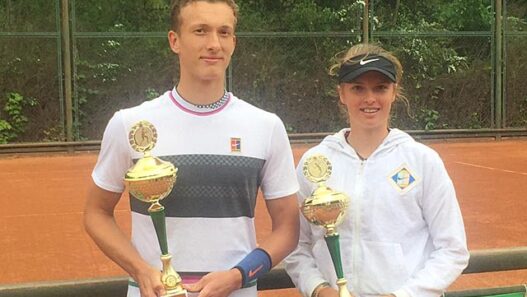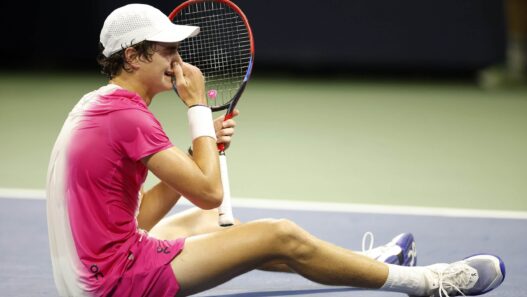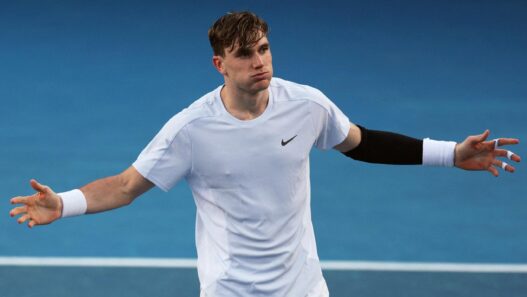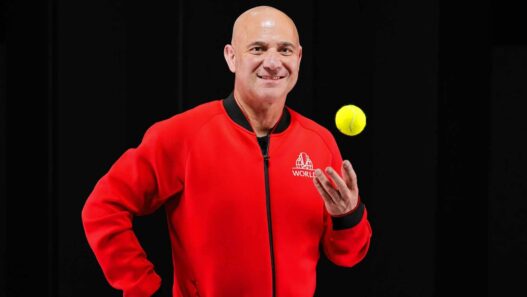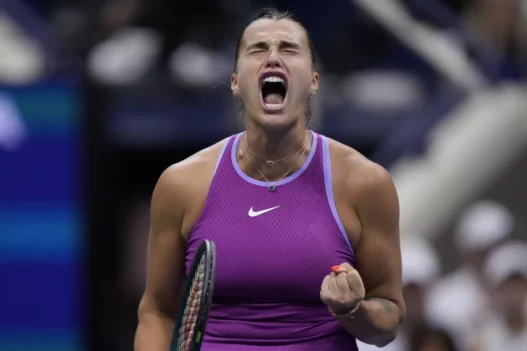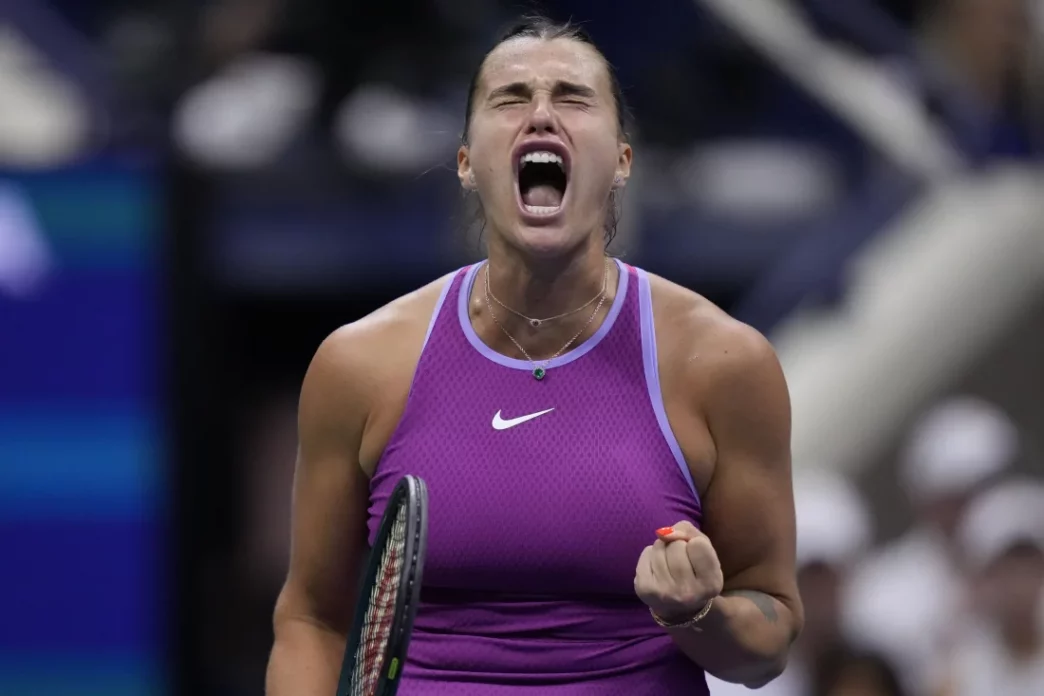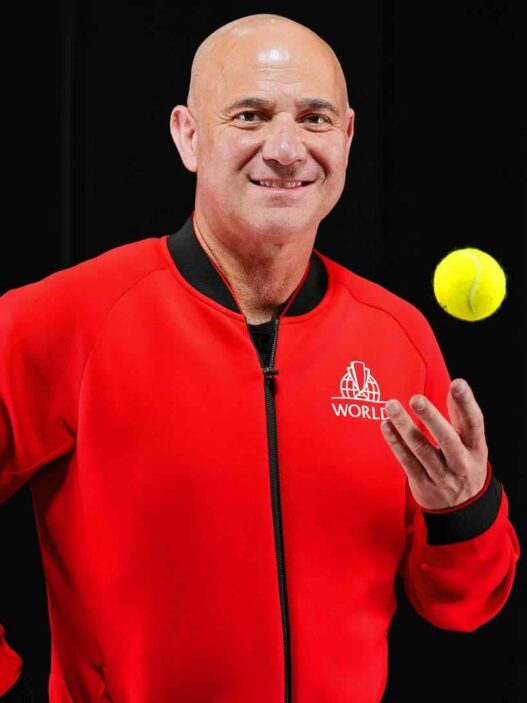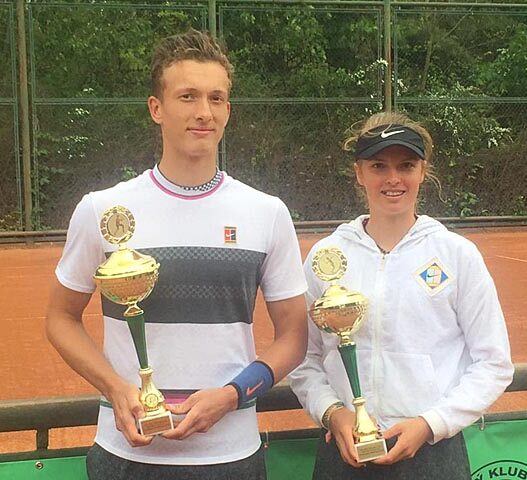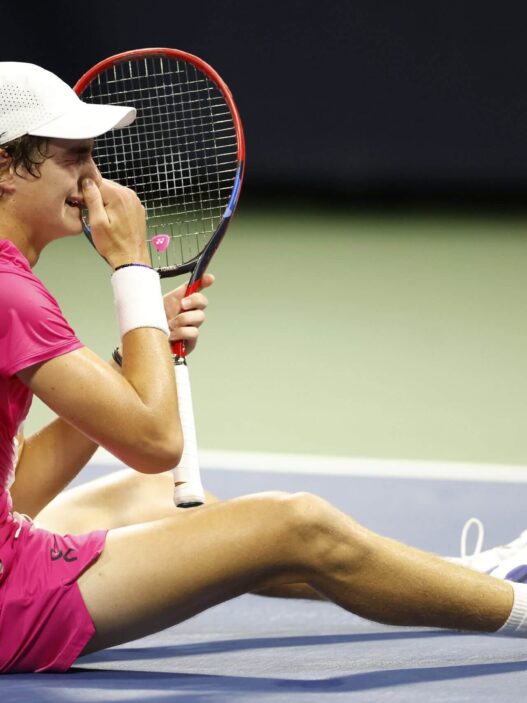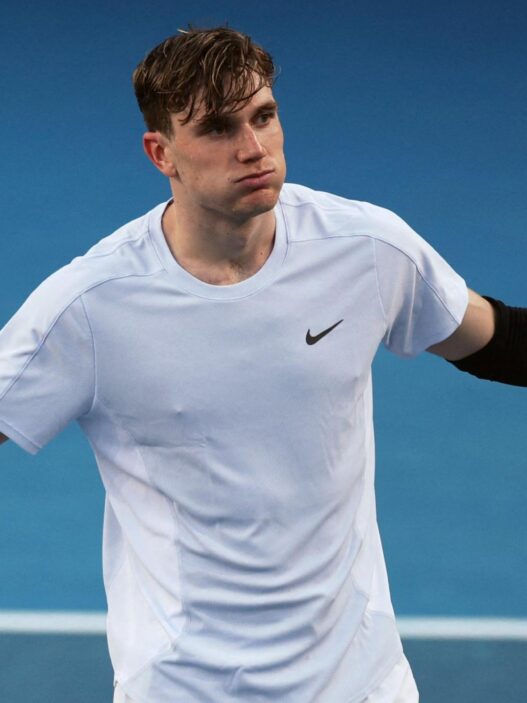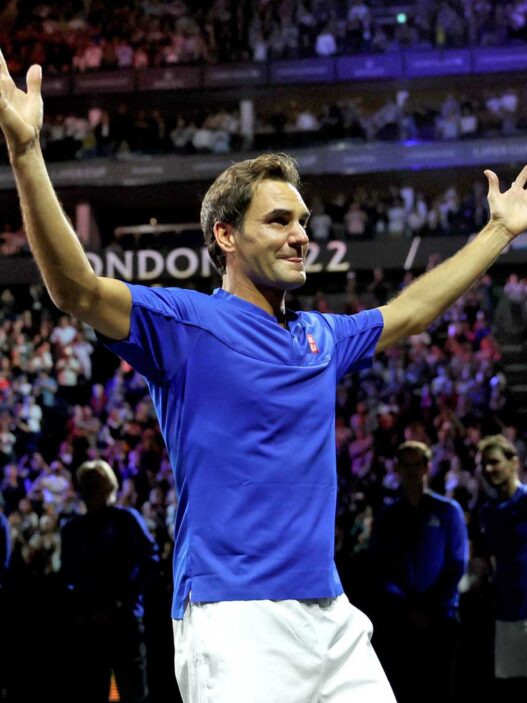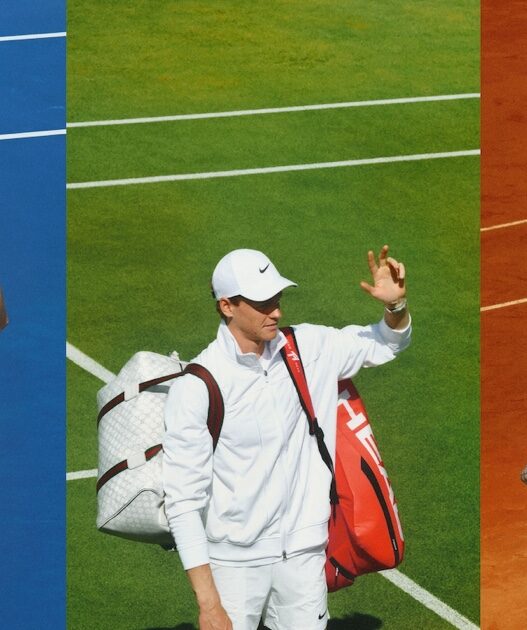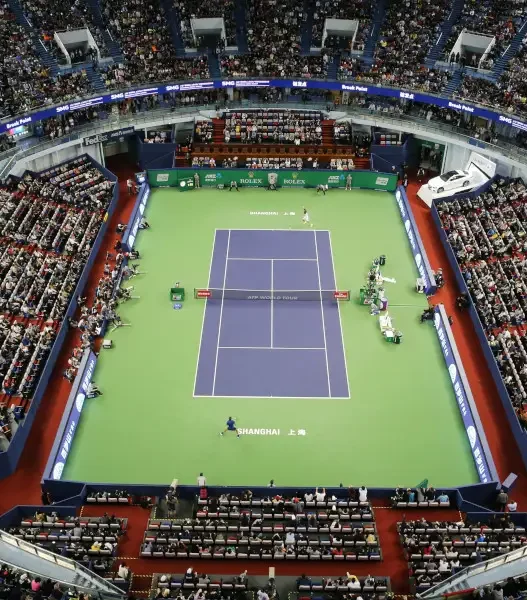There was a moment in the 2024 US Open final when it seemed like Aryna Sabalenka might falter. Jessica Pegula, the ever-determined American, had clawed her way back into the match after being down a set and 3-0. The crowd inside Arthur Ashe Stadium leaned forward in anticipation. The familiar narrative—a Sabalenka meltdown under pressure—hung in the air like New York humidity. But Sabalenka didn’t break. Instead, she recalibrated. Her booming forehand found the lines, and her serve, once a source of uncertainty, became a weapon of calm destruction. Moments later, she was lying on the blue court, a Grand Slam champion for the third time, her first title in New York.
Sabalenka, at 26, isn’t just another name in tennis; she is a player who, over the last two seasons, has redefined how we think of power in the women’s game. If there was a time when we could critique her for being erratic, prone to frustration, those days feel far behind her now. In 2024, Sabalenka has turned into a force on hard courts, dominating the Australian Open in January and, now, the US Open. But what’s driving this transformation? How has a player once known for her explosive game—sometimes to her detriment—found balance and consistency on tennis’s biggest stages?
Sabalenka’s power is not new. The Belarusian has always played with raw, uninhibited strength. In her early years on the tour, this strength could overwhelm opponents—or herself. She swung for the fences, sometimes to dazzling effect and other times to disastrous ends. Matches that seemed within her grasp would slip away as her high-risk style teetered into self-destruction.
But in 2024, her power has matured. There’s still the ferocity, the punishing forehand, and the unrelenting aggression, but now it comes with nuance. In the final against Pegula, Sabalenka unleashed 40 winners to her opponent’s 17, dictating play with surgical precision. She didn’t just rely on brute force but used angles, spin, and movement to dominate.
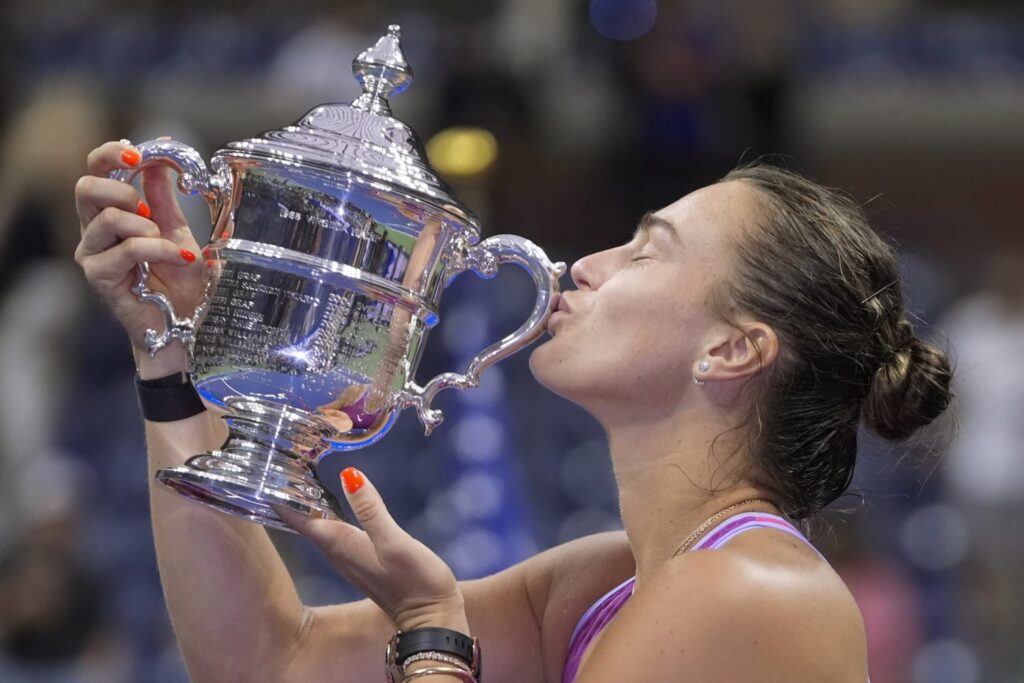
This control over her power is, perhaps, what separates Sabalenka from many of her peers. While players like Jessica Pegula and Ons Jabeur thrive on consistency and placement, Sabalenka marries power with a tactical mindset. There’s beauty in the way she plays now—power as poetry. The question for her opponents is no longer whether Sabalenka will hit big; it’s how they will defend against her newfound ability to hit smart.
To understand Sabalenka’s rise, you must look beyond the technical aspects of her game and into her mind. In 2023, she came close to Grand Slam glory at the US Open but faltered in the final, losing to Coco Gauff after taking the first set. It was a familiar narrative: Sabalenka charging forward, only to stumble when the stakes were highest. But something changed after that loss. “I never gave up on this dream,” she said after winning in 2024, her face a mixture of tears and elation.
That transformation wasn’t merely technical—it was psychological. Sabalenka learned how to steady her emotions. No longer does she spiral after a few double faults or when she finds herself down a break. Her mental fortitude has become as critical as her groundstrokes. This mental evolution was on display when Pegula threatened to push their final to a third set. Instead of panic, Sabalenka responded with calm aggression, crushing backhand winners that Pegula could only watch. This newfound ability to navigate pressure, to endure in moments where her younger self might have cracked, is at the heart of her hard-court dominance.
If there’s a surface tailor-made for Sabalenka’s game, it’s hard courts. The consistency of the bounce, the pace, and the speed with which her shots skid through the court—everything about the hard courts enhances her natural game. It’s no wonder that she has gone 27-1 on hard courts in the past year, a record that includes victories at both the Australian and US Open.
The 2024 US Open final saw this mastery on full display. Against Pegula, Sabalenka’s first serve was a cannon. She won 78% of her points at the net and fended off Pegula’s break points with heavy, deep groundstrokes. The hard courts allow her to take control of points early and, crucially, finish them. On a slower surface, like clay, she might not have as much time to set up her shots. But on the quick, true surface of a hard court, Sabalenka’s power finds its rhythm.
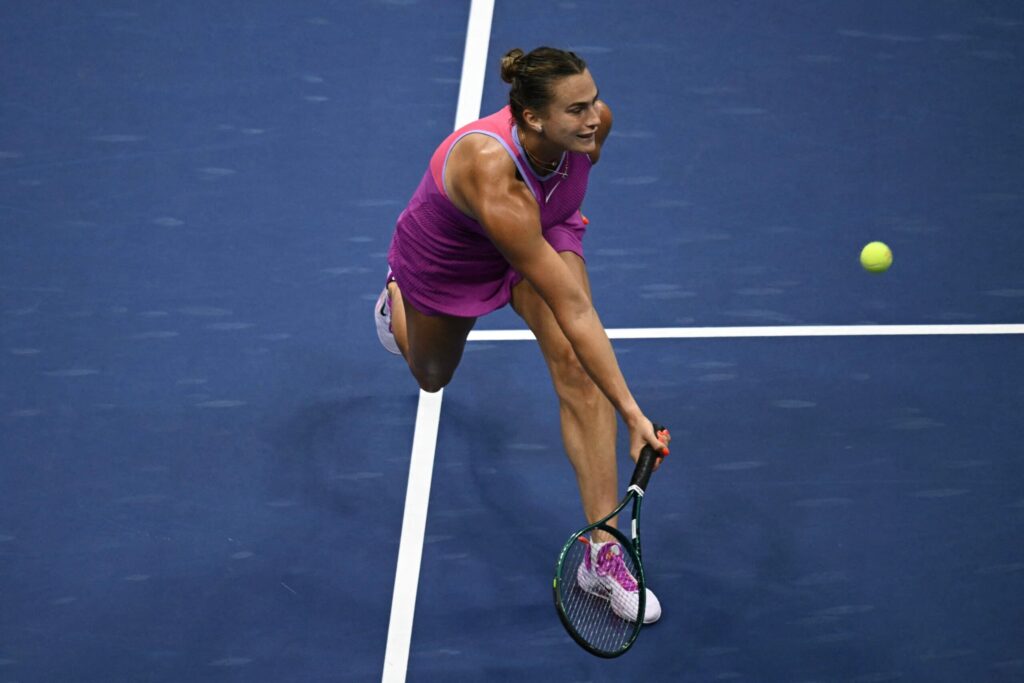
Sabalenka’s serve has been a source of both brilliance and frustration. Early in her career, double faults were an Achilles’ heel. Matches would slip away as the pressure mounted and her second serve crumbled. But in 2024, Sabalenka’s serve has been refined into a reliable weapon. Against Pegula, she mixed power with placement, winning free points when she needed them most. Her second serve, once a liability, has become something she can trust. It’s still not perfect, but the double faults that haunted her have diminished significantly.
What’s notable about Sabalenka’s serve is that it no longer defines her. While it remains a potent part of her game, it is not the entirety of it. She has built layers into her tennis—net play, drop shots, and, above all, patience. When her serve falters, she has other tools at her disposal.
With three Grand Slam titles now to her name, Aryna Sabalenka has firmly established herself as the player to beat on hard courts. But tennis is about more than just one surface, and the question now becomes: Can Sabalenka translate this dominance to other courts? The clay of Roland Garros and the grass of Wimbledon offer different challenges, but if Sabalenka’s 2024 season is any indication, she’s ready to conquer those as well.
What makes Sabalenka’s rise so fascinating is that it’s about more than just power—it’s about perseverance, mental evolution, and a willingness to learn from failure. Sabalenka is not simply the hardest hitter on the tour; she’s one of its most complete players. And as she lies on the hard courts of Flushing Meadows, a Grand Slam champion once again, it’s clear that Sabalenka has turned power into art.




